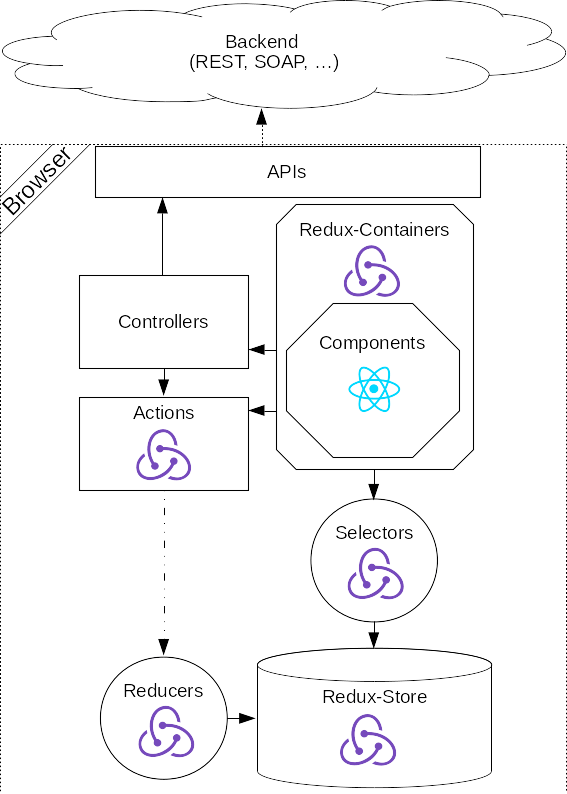This post is about how a frontend architecture could look like. The presented architecture is not the only way how to solve the problems in the frontend like loading time, data retrieval, etc. but it can be one possible way.
The architecture
In the architecture, the “backend” is behind an API-Gateway, which doesn’t really concern us. The task of this API-Gateway is to handle REST-Calls.
The four main parts in the frontend are:
